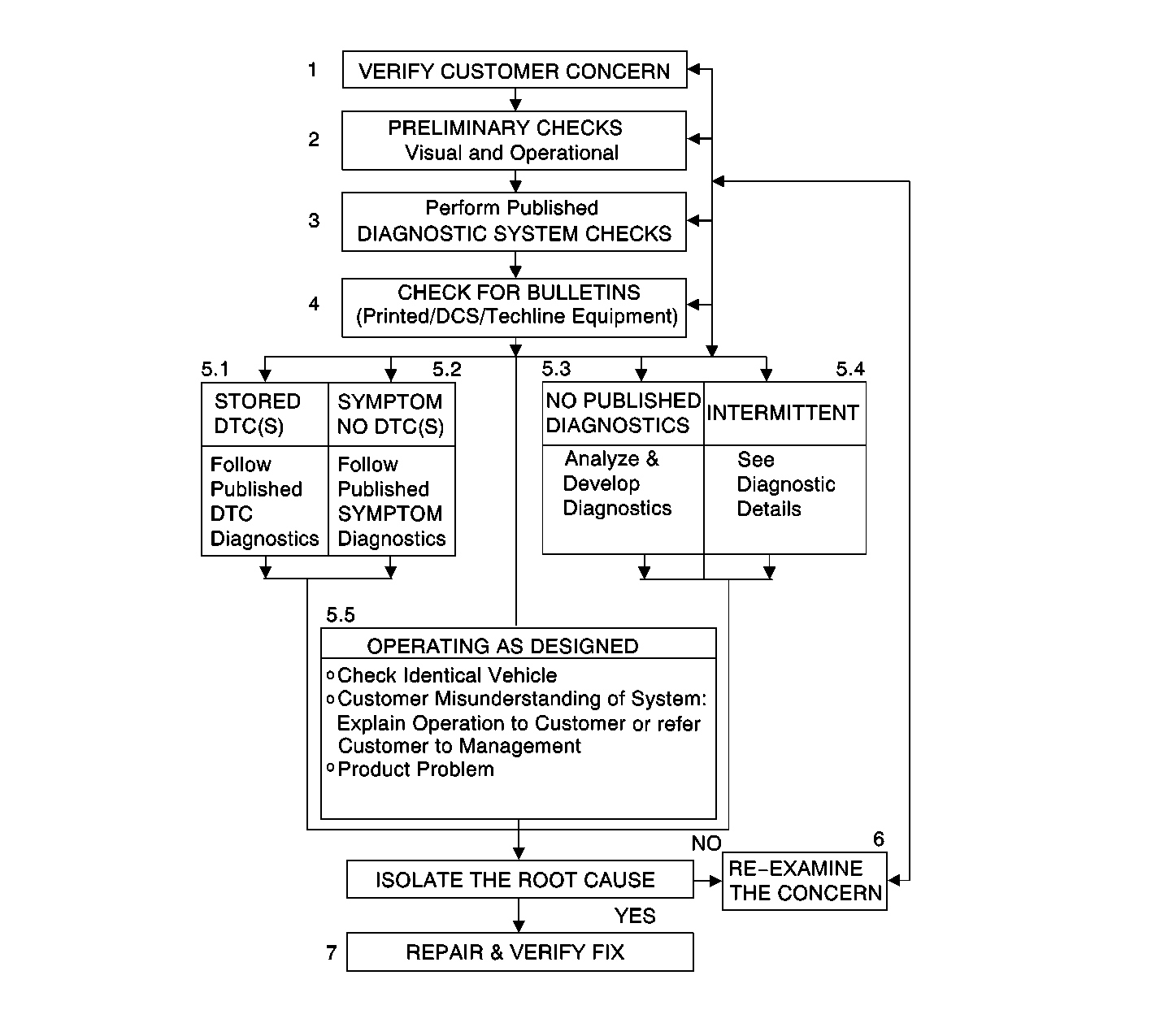|
|---|
| (1) | Verify the concern: In order to verify
the concern the technician should know the normal operation of the system. |
| (2) | Preliminary Checks: Conduct a thorough visual inspection. Review the service
history. Detect unusual sounds or odors. Gather diagnostic trouble code information
in order to achieve an effective repair. |
| (3) | Perform Published Diagnostic System
Checks: One or more DTCs may not support a system. System checks verify the
proper operation of the system. This will lead the technician in an organized
approach to diagnostics. |
| (4) | Check Bulletins and Other Service Information:
Also checks the videos, the newsletters, and the Pulsat programs, etc. |
| (5.1) | Stored DTCs: Follow the designated DTC table exactly in order to make an effective
repair. |
| (5.2) | Symptom No DTC: Select the symptom from the symptom tables. Follow
the diagnostic steps or suggestions in order to complete the repair, or refer
to the applicable component/system check. |
| (5.3) | No Published Diagnostics: Analyze
the complaint. Develop a plan for the diagnostics. Utilize the wiring diagrams
and theory of operation. |
| (5.4) | Intermittents: Conditions that are not always
present are intermittent. In order to resolve intermittents, perform the
following. Observe the history for similar cases where repair history may
be available. Combine the technician knowledge with efficient use of the
available service information. Evaluate the symptoms and conditions described
by the customer. Use a check sheet or other method in order to identify the
circuit or electrical system component. Follow the suggestions for intermittent
diagnosis found in the service documentation. Scan tools have data capturing
capabilities that can assist in detection of intermittents. |
| (5.5) | Vehicle
Operates as Designed: This condition exists when the vehicle is found to operate
normally. The condition described by the customer may be normal. Verify against
another vehicle that is operating normally. The condition may be intermittent.
Verify the concern under the conditions described by the customer
before releasing the vehicle. |
| (6) | Re-examine the Concern: If a technician cannot
successfully find or isolate the complaint, a reevaluation is necessary.
Re-verify the complaint. The complaint could be an intermittent or normal. |
| (7) | Repair and Verify Fix: After isolating the cause, make the repairs. Then validate
for proper operation. Verify that the symptom has been corrected. Verification
may involve road testing the vehicle. |
